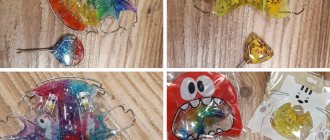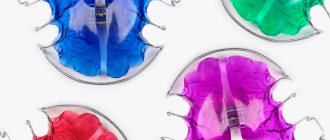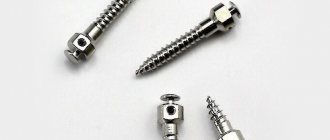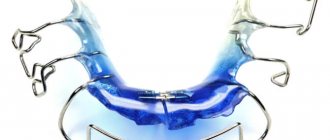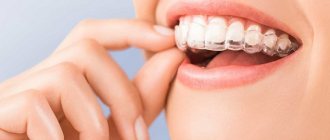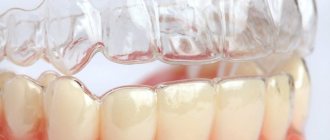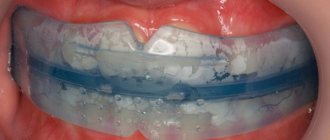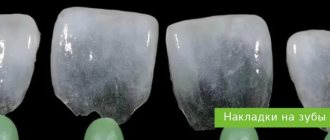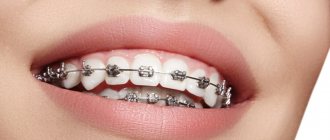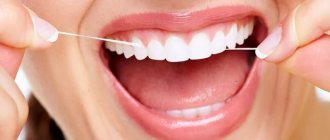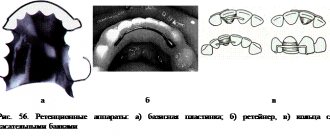An incorrect bite or uneven position of teeth is not at all a matter of aesthetics. Disturbances in the development of the jaws and the position of the teeth cause many problems:
- The load on the teeth increases when chewing food. As a result, teeth decay faster and mobility increases.
- Brushing your teeth becomes more difficult: some areas may be inaccessible to the brush. As a result, the chances of developing caries and its complications, inflammation of the roots (periodontitis) or gums (gingivitis) significantly increase.
- The inability to chew food properly due to a malocclusion has a negative impact on the state of the digestive system.
- Improper jaw formation results in diction problems and causes snoring.
The dental department of GUTA CLINIC will help you solve any orthodontic problems.
The clinic has an excellent diagnostic base and uses the entire range of leading orthodontic correction techniques. High-quality technology, modern safe materials and, of course, highly qualified doctors will allow you to achieve excellent aesthetic results.
When is it necessary to contact an orthodontist?
With a correct bite, adjacent teeth should fit tightly and without gaps, and the teeth of the upper jaw should overlap the lower teeth by about a third.
We strongly advise you to contact an orthodontist if:
- the upper or lower jaw protrudes excessively;
- a gap forms between the teeth of the upper and lower jaws;
- the teeth of the upper jaw almost completely overlap the teeth of the lower jaw.
- the dentition is uneven, the teeth are crooked and deformed
- There are gaps between the teeth.
The reasons for such violations may be different:
- heredity;
- diseases that affect bone formation (rickets, whooping cough, diphtheria, etc.)
- bad habits of early childhood (late refusal of the pacifier, tendency to suck fingers, toys, lip biting, etc.);
- mouth breathing;
- injuries.
Whatever the cause of malocclusion, there are now treatment methods that can effectively cope with any anomalies.
Moreover: modern orthodontics allows us to successfully solve the problems of patients at almost any age. A variety of deformities can be eliminated, including those resulting from tooth loss, age-related changes and periodontal disease.
Of course, the older the person, the more effort (and time) correction will be required. So it is best to solve problems with bite and teeth position in childhood, when the bones of the skull are not yet fully formed.
Types of fixed devices
I prefer devices from leading dental brands. We will decide which option is right for your child after examination and diagnosis. We will select a model that corrects the defect, is positively perceived by the young patient, and is affordable financially.
Haas/Marco Ross devices
This is a new level of defect correction. The device was first introduced by Mark Ross - he used a titanium screw. But Andrew Haas improved the design by using a stronger and more powerful screw - the Hyrex screw.
The corrective structure is assembled from a screw, a base made of light plastic, support rings and grips (“claws”) made of metal for fixation on primary chewing teeth, and is attached to temporary fangs with filling material. Such devices allow you to expand the upper jaw as much as the situation requires. They are made from a mold for each baby. If the anomaly is complicated, then the modifications are supplemented with other necessary elements.
The device is installed so that the jaw is formed adequately, and there is a place for each tooth. Its advantages:
- Comfortable to wear, beautiful, you can choose the color of the plastic or the pattern. Unnoticeable to others, but the baby knows that there are amazing butterflies and simply beautiful products in his mouth.
- Attaches firmly.
- The addiction is quick, the discomfort in the first days is minimal.
- Simple application - the screw is tightened, the palatal suture expands and stimulates the correct formation of the jaw.
The device will cope with bite correction independently or, in difficult cases, will reduce the period of follow-up treatment in adolescents with a brace system from 12-18 months. up to six months.
Distal Jet
A gentle device that initiates movement of the first and second molars without tilting or rotation. The effect is visible after 3-4 months. It consists of a solid plastic palate, fastening rings for chewing units and an activation screw responsible for the smooth movement of the teeth. Treatment of adults and adolescent children is possible.
Career motion 3D
Often used as preparation for installing braces. The task is to gently shift the lateral units of the jaw back. This is an upper partial arch plus a bracket for the lower molars. Class 2 elastics are used, suitable for teenage children and adults.
Indications and restrictions
The basis for distalization is the diagnosed deviation of the elements of the dentition. The technique is used for correction in the treatment of younger and middle-aged patients - the positive dynamics begin to deteriorate only in the “40+” category. In this case, the factors considered as relative or absolute restrictions include:
- The presence of gum tissue diseases, including periodontal disease;
- Negative changes in the bone structure of the jaw;
- Development of oncological formations of a malignant nature;
- Detection of chronic pathologies, including diabetes.
- Weakened state of immunity, etc.
A comprehensive examination, prescribed at the preliminary stage, allows not only to assess the condition of the oral cavity and identify areas of localization of pathogenic bacteria, but also to determine the feasibility of distalization of molars, at the same time selecting a design for the implementation of the orthodontic treatment procedure.
How is the Haas apparatus installed?
In fact, installing the device in the attending physician’s office is quite simple and does not take long:
- In a friendly atmosphere, we clean the enamel of plaque with a pleasant aromatic paste.
- We use dental glue - a safe cement - and fix the device onto the primary chewing teeth and canines.
- Excess filling material is removed and the interdental spaces are cleaned.
- The composite material becomes strong under the light of the lamp.
I use modern technologies and equipment; my child and I discuss the design of the device and the need for its installation as equals. Before the correction begins, together with the parents we discuss the problem and ways to solve it. Make an appointment and we will make sure your baby's teeth are perfect.
The essence of the procedure
Correction of anomalies affecting the development of bite is carried out in various ways. Each of the existing devices, from braces to trainers, is characterized by certain advantages and disadvantages - both from the point of view of medical effectiveness and from the position of the patient, who is forced to deal with physical and moral inconveniences during the treatment process. Choosing the appropriate technique is the key to effective and comfortable recovery.
External devices
Distalization of molars is carried out in accordance with two protocols - external and internal. For the first method, traction devices are used, fixed on the vestibular (external) surface of the dentition, and requiring strict adherence by the patient to medical recommendations.
The practice of using devices in this category is controversial, and is mostly recommended for correction prescribed to younger patients. Such a tilt is caused not only by a low force effect, insufficient to significantly change the structure of the permanent bite, but also by an unaesthetic appearance, which can create significant inconvenience for adults. Correctors are produced on a serial basis - the design combines two power arches, one of which is selected taking into account the anatomical structure of the jaw.
Internal devices
Intraoral corrective devices, in accordance with the accepted classification, are divided into permanent and removable - based on the criterion of the possibility of their independent removal and installation without visiting a dental clinic.
The first group is considered the most effective devices, which is caused by constant directed pressure exerted on defective elements of the dentition. The structure is fixed and remains on the teeth until the end of treatment, the duration of which depends on the severity of the pathology - from 2-3 months to one and a half to two years. It is worth noting that while wearing the corrector, you will also need to regularly visit your doctor to monitor the dynamics and activation of the device. At the same time, the lack of the option to remove the product, at least temporarily, makes hygienic dental care difficult and requires psychological adaptation.
However, statistics show that fixed orthodontic appliances for molar distalization remain the most practical correction option. Among the popular models recommended by dentists are:
- Pendulum - systems that combine a power arc and fixing rings, fixed to the supporting chewing units. The base is a polymer plate that fits tightly to the surface of the palate;
- Distal Jet is a device oriented towards the reverse displacement of molars, which includes a screw design. Regular activation of the screw provides the necessary tension, preserves the integrity of tooth enamel, and helps avoid rotation of adjacent elements;
- FROG is a non-removable model for the correction of torsion, which is a structure consisting of a palatal plate, screws, spring elements and supporting artificial crowns.
The duration of molar distalization ranges from three to nine months.
GUTA CLINIC: full range of services in the field of orthodontics
The clinic provides a full range of services in the field of orthodontics. It has a modern diagnostic base and cooperates with leading dental laboratories.
When choosing a technique for correcting a bite, the individual characteristics of the patient, his age and, of course, personal preferences must be taken into account.
Trainers
Removable devices made of elastic medical silicone. This material is hypoallergenic and does not injure the gums. They are used primarily to correct mild malocclusions in children from 4 to 14 years old - their use is most optimal during the change of teeth from milk to permanent ones.
Trainers allow you to:
- straighten the front teeth;
- neutralize the consequences of childhood habits (biting the tongue, lips or cheeks, mouth breathing; thumb sucking, jaw clenching, teeth grinding, etc.)
- correct the incorrect swallowing mechanism, the position of the tongue in the child’s mouth;
In adult patients, strainers are noticeably less effective. However, they are sometimes used in adult orthodontics - when a light correction is required or to stabilize teeth after treatment with braces.
Removable plates
A “classical” technique that does not lose its relevance in pediatric orthodontics. The high-strength plastic structure is attached to the teeth using hooks and fasteners; the system can be narrowed or expanded by rotating the adjusting screw. The “plates” gradually move the teeth into the desired position. The devices are manufactured strictly individually (based on an impression) and exactly match the anatomical features of the child.
Distal Jet
Used to move the lateral teeth (molars) of the upper jaw back. Effective in both children and adults. Easy to use - there is no need to remove/put on the device. Almost invisible to outsiders. Does not injure soft tissues of the oral cavity. And the main thing is to maintain the stability of the molars: the teeth move practically without rotation or tilting.
Aligners, aligners
An alternative to permanent braces in cases where minor irregularities need to be corrected.
They are made individually, based on an impression, from highly elastic polymer using 3D printing. The design of the mouth guards accurately imitates the outlines of all surfaces of the dentition. In this case, it is not just one mouthguard that is worn out, but a whole set, in which each mouth guard is slightly different from the previous one. Removable aligners must be replaced every two weeks. The purpose of each new aligner is to change the position of the teeth and put them in the desired position. The obvious advantages of a mouth guard include:
- versatility - applicable at any age.
- do not cause allergies,
- do not injure soft tissues, do not damage tooth enamel.
- Easy to put on and take off, making oral hygiene convenient
Bracket systems
Another classic method of correcting a bite is to violate the relationship between the upper and lower jaws, correct the position of the teeth, and eliminate large gaps between them. It is successfully used to treat both children and adults.
A complex system is applied to the teeth, which is made according to an individual model for each patient. Braces apply pressure on each tooth at a predetermined angle, forcing them into the desired position.
Traditionally, braces are attached to the outside of the teeth ( vestibular fixation technique
). This affects appearance, but does not affect diction and provides faster correction
Nevertheless, lingual systems
. They are attached to the inner - from the side of the tongue - surface of the teeth. They are invisible from the outside, but can affect speech intelligibility and require more time to get used to. And in general, treatment is approximately 30% longer than with vestibular fixation.
Prices for bite correction
| List of services to correct bite | Price |
| Study on diagnostic jaw models | RUB 1,500 |
| Description and interpretation of radiographic images: TRG (1 image) | 1,000 rub. |
| Manufacturing of a removable plate apparatus with a screw and additional elements | RUB 16,500 |
| Manufacturing of a removable plate apparatus with a Bertoni screw and additional elements | 19,000 rub. |
| Treatment on a trainer, LM activator | 12,000 rub. |
| Manufacturing of a two-jaw apparatus (Twin Block, Andresen, Frenkel, Persin apparatus for vertical incisal disocclusion) | 26,000 rub. |
| Occlusal splint (splint) | 25,000 rub. |
| Sports protective mouth guard during treatment with braces | 20,000 rub. |
| Correction of removable orthodontic appliance | 850 rub. |
| Orthodontic appliance repair | 3,000 rub. |
| Orthodontic appliance maintenance services: inspection, activation | 550 rub. |
| Making a pilot on a metal frame | RUB 1,350 |
| Making the vestibular plate | RUB 8,100 |
| Making a plate with a tongue barrier (without clasps) | 3,000 rub. |
| Making a plate with occlusal pads | 8,000 rub. |
| Manufacturing one element for a removable plate (clasp) | 1,000 rub. |
| Manufacturing one element for a removable plate (screw) | RUB 3,900 |
| Repairing a base fracture with self-hardening plastic | 3,000 rub. |
| Repairing two base fractures with self-hardening plastic | 6,000 rub. |
| Manufacturing of an apparatus for distalization of molars on the upper jaw (Pendulum apparatus) | 25,000 rub. |
| Manufacturing of an apparatus for rapid palatal expansion (Haas, RME, Nord apparatus) | 25,000 rub. |
| Palatal clasp | 9000 rub. |
| Manufacturing and fixation of Mesial Jet, Distal Jet devices | RUB 36,000 |
| Fitting and installation of the apparatus for advancing the lower jaw (Twin Force Bite Correktor) | RUB 35,000 |
| Ring with spacer (for one tooth) | 5000 rub |
| Tongue flap (fixation with rings) | 12000 rub. |
| Making an orthodontic ring | 3000 rub |
| Orthodontic correction using the Damon Q non-ligature metal brace system for 1 jaw | 28500 rub. |
| Orthodontic correction using the Damon CLEAR non-ligature ceramic brace system for 1 jaw | 41000 rub. |
| Orthodontic correction using the non-ligature combined brace system Damon Q + Damon CLEAR for 1 jaw | 34500 rub. |
| Orthodontic correction using a non-ligature metal bracket system H4 for 1 jaw | 23000 rub. |
| Orthodontic correction using the Insignia brace system for 1 jaw | 42000 rub. |
| Orthodontic correction using the Clarity advanced ceramic ligature bracket system for 1 jaw | 28500 rub. |
| Orthodontic correction using the Clarity ceramic ligature bracket system with a metal groove for 1 jaw | 26500 rub. |
| Orthodontic correction using a metal ligature brace system for 1 jaw | 19000 rub. |
| Orthodontic correction using the Damon Q non-ligature metal brace system for 1 unit | 2850 rub. |
| Orthodontic correction using the Damon CLEAR ceramic non-ligature brace system for 1 unit | 4100 rub. |
| Orthodontic correction using the CLARITY ceramic ligature bracket system for 1 unit | 3150 rub. |
| Orthodontic correction using a metal ligature bracket system for 1 unit | 2150 rub. |
| Orthodontic correction using a brace system using a microimplant (for 1 unit) | 5500 rub. |
| Orthodontic correction of the first degree of complexity (up to 6 teeth) | 24000 rub. |
| Orthodontic correction of the second degree of complexity | 30,000 rub. |
| Orthodontic correction of the third degree of complexity | 41000 rub. |
| Orthodontic correction with replacement of the arch in the bracket system | 1200 rub. |
| Orthodontic correction with bracket replacement | 3000 rub |
| Orthodontic correction with bracket re-bonding | 1000 rub |
| Fixation of the bracket system on 1 jaw | 22000 rub. |
| Indirect fixation of the bracket system on 1 jaw | 26000 rub. |
| Fixation of one orthodontic element | 2100 rub. |
| Removing the bracket system from 1 row of teeth | 3000 rub |
| Manufacturing of the positioner | 14500 rub. |
| Positioner with teeth rearrangement | 18000 rub. |
| Fixed retainer for 1 row of teeth | 5000 rub |
| Fixing a retainer for 1 tooth | 800 rub |
| Removing a retainer from 1 tooth | 400 rub |
| Making an aligner (aligner) | 4500 rub. |
| Making a removable plastic plate without elements (bite block), Hauley plate | 9000 rub. |
| Orthodontic correction using a removable orthodontic device of the mouth guard system: Set of VIVERA mouth guards (3 pcs. per dentition) | 30,000 rub. |
| Orthodontic correction using a removable orthodontic device of the mouth guard system: Set of VIVERA mouth guards (3 pcs. for two dentitions) | 43000 rub. |
| Anthropometric studies: Three-dimensional computer diagnostics of the future result of orthodontic treatment using braces or Invisalign | 40,000 rub. |
| Invisalign Full (Full method over 14 aligners) | RUB 305,000 |
| Invisalign Lite (Express method for up to 14 aligners) | RUB 205,000 |
| Invisalign Teen | RUB 345,000 |
| Invisalign 7 (Short method up to 7 aligners) | RUB 215,000 |
| Anthropometric studies: Ortho-Check 3D diagnostics of the future outcome of orthodontic treatment using the FlexiLigner system | 40,000 rub. |
| FlexiLigner Quick-ONE - from 1 to 5 flexes (1 arc) | 15,000 rub. |
| FlexiLigner Easy-ONE - from 6 to 10 flexes (1 arc) 1 correction | RUB 36,000 |
| FlexiLigner Light-ONE - from 11 to 16 flexes (1 arc) 2 corrections | RUB 94,000 |
| FlexiLigner Middle-ONE - from 17 to 32 flexes (1 arc) 3 corrections | 130,000 rub. |
| FlexiLigner Extra-Full-ONE - from 33 flexes and without limitation (1 arc) 4 corrections | 160,000 rub. |
| Anthropometric studies: Ortho-Check 3D diagnostics of the future outcome of orthodontic treatment using the FlexiLigner system | 50,000 rub. |
| FlexiLigner Quick - from 1 to 5 flexes (2 arcs) | 40,000 rub. |
| FlexiLigner Easy - from 6 to 10 flexes (2 arcs) 1 correction | RUB 94,000 |
| FlexiLigner Light - from 11 to 16 flexes (2 arcs) 2 corrections | 130,000 rub. |
| FlexiLigner Middle - from 17 to 32 flexes (2 arcs) 3 corrections | RUB 170,000 |
| FlexiLigner Full - from 33 to 45 flexes (2 arcs) 4 corrections | RUB 210,000 |
| FlexiLigner Extra Full - from 46 flexes and without limitation (2 arcs) 4 corrections | RUB 240,000 |
| FlexiLigner: restoring a lost aligner | RUB 18,900 |
